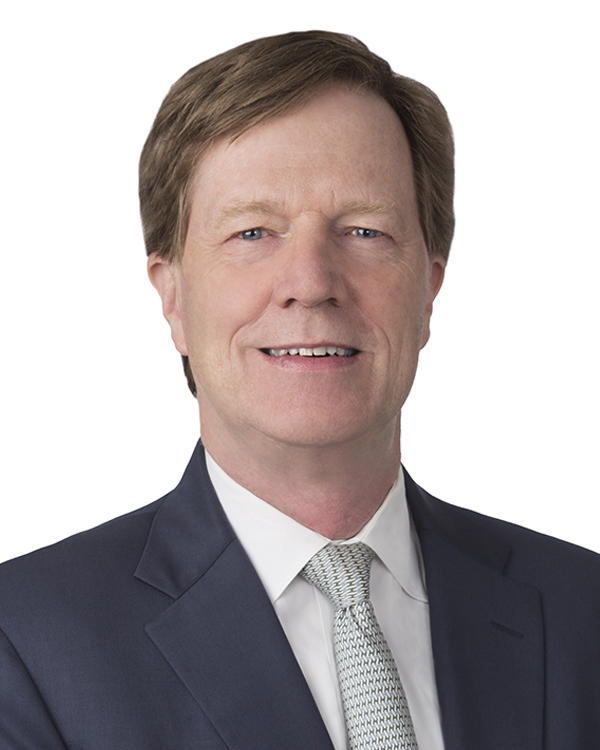Jurgita Ashley and David Wilson are partners with Thompson Hine LLP. Ms. Ashley co-chairs both the firm’s Public Companies group and its ESG Collaborative and Mr. Wilson in the Partner-in-Charge of the Washington, DC office.*
***
A decision on class certification by a Southern District of New York judge in the long-running putative securities class action case against the Goldman Sachs Group, Inc. (“Goldman”) deserves the attention of companies making ESG disclosures in their public statements and SEC filings.1 The action is back before the trial court after the U.S. Supreme Court vacated a U.S. Court of Appeals for the Second Circuit decision and remanded the case back to the district court last June.
At issue in this decision was whether somewhat generic statements about Goldman’s business practices and conflict-of-interest policies satisfied the reliance prong of the securities fraud claim for purposes of certifying a plaintiff class. Put another way, the court was evaluating whether the defendants had met their burden to rebut the presumption that the alleged misstatements had an impact on the price of Goldman’s shares.
The plaintiff shareholders alleged that Goldman made false statements to fraudulently maintain an inflated share price. Those statements included some general pronouncements about clients coming first and compliance with “the letter and spirit of the laws, rules and ethical principles that govern us.” The most specific statements—and those that the court deemed to have the most weight—concerned Goldman’s attention to conflicts of interest. Goldman stated that as its business and its client base had expanded, it increasingly had to “address potential conflicts of interest, including situations where our services to a particular client or our own proprietary investments or other interests conflict, or are perceived to conflict, with the interest of another client.” Thus, Goldman declared, “[w]e have extensive procedures and controls that are designed to identify and address conflicts of interest….”
The plaintiffs alleged that these statements were materially false in light of subsequent disclosures about Goldman’s conflicted role in certain collateralized debt obligation transactions in which (among other things) Goldman had bet on certain of its products performing poorly or failing.
The court analyzed the price impact of these statements under the “inflation maintenance” theory, under which the statements are alleged to have fraudulently maintained an already inflated stock price. That approach is distinct from the “inflation introduction” theory, which is applied to alleged misstatements that fraudulently introduce inflation into a stock price. Thus, the plaintiffs alleged that Goldman made these statements, not so much to increase the price of its stock, but in order to burnish “its reputation as the preeminent Wall Street bank focused first and foremost on responsible business practices that placed their clients’ needs paramount to all else.”
Under Second Circuit and U.S. Supreme Court case law, the plaintiffs were entitled to rely on what is known as the Basic presumption of reliance—a rebuttable presumption that an investor relies on a misrepresentation so long as it is reflected in the price of the stock at the time the investor bought the stock. Defendants can rebut that presumption at the class certification stage with a showing, by a preponderance of the evidence, that the alleged misstatements in fact had no impact on the stock price. In effect, if the alleged misstatements are determined to have had any effect at all on the stock price, the defendants fail to rebut the presumption.
The District Court’s opinion walked through the factors set forth by the U.S. Supreme Court for the Basic rebuttal in one of the interlocutory appeals of the case. The principal issue contested by the parties through the testimony of competing experts, briefing, and oral argument was whether the price impact of the alleged misstatements could be measured by the stock price decreases after those statements were revealed to be false. The defendants, of course, sought to cast the price drops as attributable to other factors, most significantly the news of enforcement activities against Goldman. They argued that the alleged misstatements were so generic and unspecific that reasonable investors would not rely on them and therefore the statements could not have influenced the stock price.
In its decision to grant class certification, the court acknowledged that general statements will have less of an effect on a stock price than more specific ones, but declared that the defendants did not rebut the Basic presumption, i.e., they could not show by a preponderance of the evidence that the alleged misstatements had no price impact whatsoever. As the court declared, “Defendants have presented no evidence purporting to demonstrate … that if Goldman had replaced the alleged misstatements with the truth about its conflicts, its stock price would have held fast.”
The court’s analysis provides some lessons for a company’s disclosures about its business practices, including those pertaining to ESG issues. First, take care in making generic statements to be certain that they are indeed generic. In Goldman, the court rejected the defendants’ argument that no reasonable investor could have relied on the alleged misstatements because they were the kind of generic statements that all institutions in the investment business make. Even if not fraudulent, the court noted that the ubiquity of such statements is an indication that the companies view them as capable of influencing and maintaining a company’s stock price. Moreover, while the general statements about Goldman’s adherence to law and ethics may not have been specific enough to warrant a claim, the court reasoned that more specific statements about its attention to conflicts of interest had more of an air of specificity.
Second, subsequent disclosures of specific adverse issues may render actionable earlier statements that a company believed or intended to be simply generic platitudes. In Goldman, the court assessed the defendants’ argument that there was a “glaring … informational mismatch” between the alleged misstatements and the subsequent disclosures. It applied a sliding-scale test to determine whether there was a mismatch in the degree of generalness between the misrepresentation and the subsequent corrective disclosure. The court acknowledged that some of the alleged misstatements, viewed in isolation, could be too generic to be a match with the later disclosures. But the court found the statements about Goldman’s approach to conflicts management were more specific than those about compliance with the law and putting clients first and were not so divergent from the later disclosures as to qualify as a “mismatch” that would overcome the Basic presumption of reliance in the context of an “inflation maintenance” claim.
Third, be intentional in making ESG disclosures and clear on their intended objectives. For example, when announcing ESG goals, be specific about what the company is committing to accomplish and which framework was used for goal setting. When communicating progress against previously announced ESG targets, be explicit about the baseline, time periods covered, scope of operations measured, validation process, and how progress was achieved (e.g., to what extent carbon offsets are being utilized). Be clear about the company’s current status and assumptions being made and be upfront about what the disclosure is not intended to communicate (with applicable carve-outs and tailored disclaimers). If the disclosure’s purpose is to address particular shareholder concerns, review applicable investor guidelines—here again, specificity of disclosure can go a long way.
The Goldman decision provides a cautionary tale to companies making ESG pronouncements in their public disclosures. Companies frequently make general statements that they comply with all environmental regulations, they are committed to progress on carbon neutrality, or they have rigorous policies and procedures to detect and prevent discrimination and harassment. Those kinds of general statements run the risk of becoming alleged misrepresentations in a securities lawsuit if the company later discloses toxic waste spills, increases in or lack of progress on reducing its carbon footprint, or class action lawsuits alleging widespread discrimination against women or minorities. While companies may be eager to tout their ESG chops in the current environment, they should be mindful of an irony presented by the Goldman court’s decision: Companies need not say anything at all on these matters, but “once a company chooses to speak, the proper question … is not what might have happened had a company remained silent, but what would have happened if it had spoken truthfully.” What was true at the time of the initial statement is measured not by the best knowledge available at the time but by hindsight occasioned by disclosure of facts learned by senior management much later.
*The views expressed in this article are attributable to the author and do not necessarily reflect the views of Thompson Hine LLP or its clients. This publication is provided for educational and informational purposes only and is not intended and should not be construed as legal advice.
Note
- Goldman has filed a request for interlocutory appeal of the district court’s class certification with the Second Circuit (a petition Washington Legal Foundation supported with an amicus brief).


